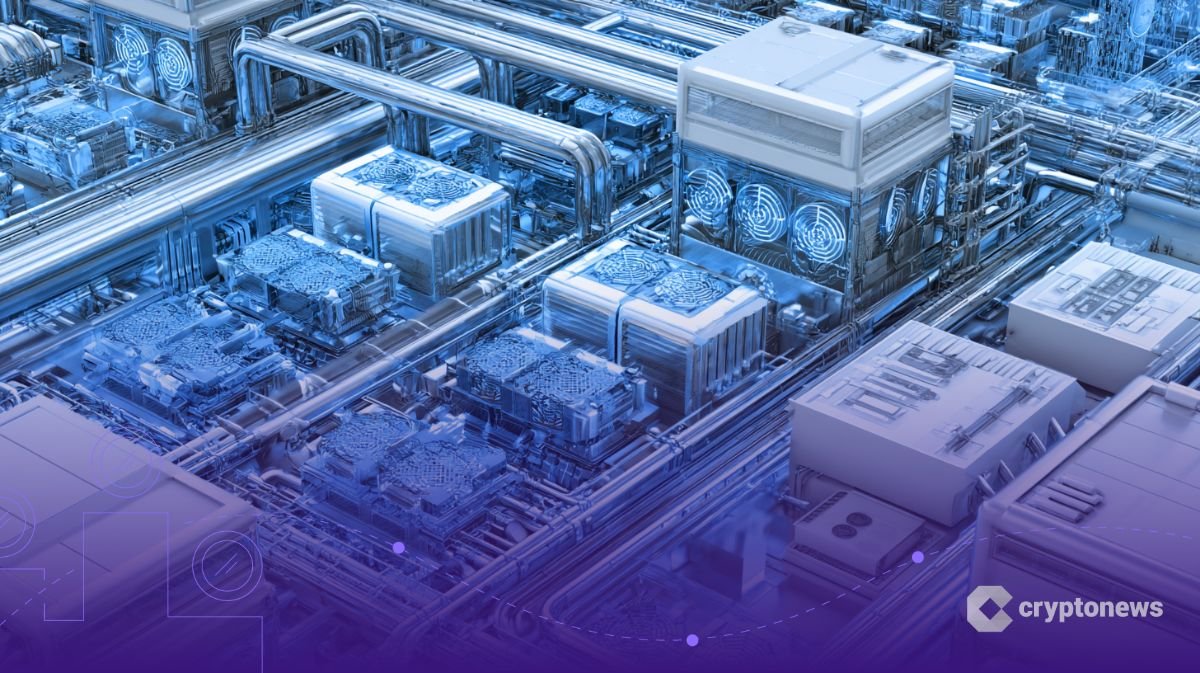Since the latest Bitcoin halving cut block rewards in half, compressing revenues across the mining sector, large operators have been searching for ways to stabilize income streams.
Increasingly, they are leasing their energy footprints to artificial intelligence and high-performance computing clients. The model is not speculative; it is already being written into multiyear contracts.
In September, Cipher Mining signed a 168-megawatt agreement with Fluidstack, an AI cloud provider. The deal runs for ten years and is valued at $3 billion. Google provided financing support worth $1.4 billion and also acquired a 5% equity stake in Cipher.
The arrangement allows Cipher to maintain ownership of its facilities while converting part of its power allocation into contracted AI revenue.
TeraWulf, another U.S.-based miner, followed a similar path. It announced hosting agreements that dedicate more than 200 megawatts to AI workloads at its Lake Mariner site. Analysts estimate the value of the deal could exceed $3.7 billion.
Contracts That Change Miner Balance Sheets
The financial character of these companies is beginning to change. Miner equity has historically traded with a high correlation to the price of Bitcoin. New long-dated contracts give investors a different risk profile to consider. Regular dollar-denominated payments from AI customers may reduce the exposure of miner stocks to Bitcoin cycles.
Iren, an Australian operator, provides an example. It recently expanded its AI cloud business by purchasing more than 12,000 GPUs. The company projects $500 million in annual AI revenue by early 2026. Analysts at Arete initiated coverage on Iren, Riot Platforms, and Cipher Mining with buy ratings, citing the stability of contracted AI revenue as a driver.
The case of CoreWeave and Core Scientific stresses the point. CoreWeave, once an Ethereum miner, shifted into GPU-based hosting. In 2025, it acquired Core Scientific in a transaction valued at $9 billion. The deal cemented its place as a supplier of computing power for AI firms, moving entirely beyond token mining.
Why the AI Shift Is Different
The entry into AI hosting is not simply diversification. It forces miners to rethink operations. Unlike Bitcoin mining, AI customers demand strict service level agreements. Data centers must offer redundancy, cooling efficiency, and long-term maintenance commitments. In practice, this means capital is redeployed from short-cycle ASIC purchases toward infrastructure upgrades that support higher-density workloads.
There is also the allocation question. Every megawatt committed to AI hosting cannot be used for Bitcoin mining. Operators will have to balance the immediate predictability of contracted revenue with the option value of a potential Bitcoin price rally.
From Hashprice to Lease Price
The mining business has long been tied to hashprice, the dollar value of one terahash of computing power per day. That metric is now being supplemented by what could be called lease price, the value of contracted power sold to external clients. In time, the lease price may become as influential for valuation models as the hash price itself.
This shift has implications for the broader network. If miners dedicate more capacity to external hosting, the growth of network hash rate may slow.
That could alter the competitive dynamics among remaining pure miners and impact difficulty adjustments. At the same time, the capital stability provided by AI contracts could keep some firms alive through periods of low Bitcoin prices, preventing sharp declines in total hash rate.
A Changing Capital Formation Cycle
The sector’s capital cycle is also adjusting. Past expansions were often financed during bull markets when high margins justified the rapid purchase of machines. Now, multi-year AI contracts provide the collateral base for raising capital in less favorable markets. That changes the rhythm of how mining infrastructure is built.
The long-term outcome is not that AI erases mining. Rather, it layers another economic activity on top of the same infrastructure. For investors, miner equities may look less like high-beta proxies for Bitcoin and more like hybrid firms that combine commodity-linked income with contracted service revenue.
The post AI Won’t ‘Kill’ Bitcoin Mining – It Might Reprice It appeared first on Cryptonews.
This articles is written by : Nermeen Nabil Khear Abdelmalak
All rights reserved to : USAGOLDMIES . www.usagoldmines.com
You can Enjoy surfing our website categories and read more content in many fields you may like .
Why USAGoldMines ?
USAGoldMines is a comprehensive website offering the latest in financial, crypto, and technical news. With specialized sections for each category, it provides readers with up-to-date market insights, investment trends, and technological advancements, making it a valuable resource for investors and enthusiasts in the fast-paced financial world.
